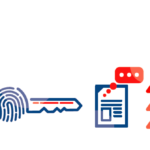Featuring the role of the scientific community in maximizing the impact of metadata, the value of plain-language summaries, an alternative open access publishing model and the growing support for Plan U
Creator, curator, custodian or consumer, we all have a role to play in improving metadata via The Scholarly Kitchen
Globally, we are facing a number of challenges – from disease outbreaks to climate change. So, shouldn’t the data that could help us tackle these problems be made readily available? Building on the FAIR principles, the FORCE11 community-led Metadata 2020 initiative aims to increase the reach and discoverability of scientific data. However, to achieve these goals, FORCE11 needs the help of the entire academic community. Researchers and publishers should work together in creating and curating data. Libraries, archives and repositories must help ensure that the data remains current, accessible and discoverable. Finally, the consumer also has a role in improving the quality of shared data, highlighting any missing or incorrect information. Engaging the wider academic publishing community is key to the continued success of data-sharing platforms.
Plain-language summaries – what are they and how can they be used to increase research transparency? via The Publication Plan
At some point in their career, most researchers, already short on time, will come across a complex new research paper they don’t fully understand. Plain-language summaries (PLSs) provide a solution to this problem. PLSs are peer-reviewed, jargon-free overviews of research findings written by the authors and published alongside the manuscript. Not to be confused with patient-specific materials, PLSs are meant for any reader seeking clarification. PLSs can also benefit authors by maximizing the reach, number of citations and impact of their research. Over recent years, PLSs have become increasingly popular among medical journals; for instance, Adis Journals and PLOS Medicine accept PLSs or author summaries. In the video shared on The Publication Plan, Jan Seal-Roberts provides a convincing argument for the use of PLSs to increase the clarity, transparency, readability and impact of research articles.
(written by Cassy Fiford)
Improving journal quality by fixing current open access publishing models via Nature
This week, director of Swiss Medical Weekly Adriano Aguzzi shared his objection to the current models of open access publishing whereby journals receive revenue per article they publish, and therefore increase their profits when they reject fewer papers. This has allowed a rapid increase in the number of predatory journals, which do not offer any quality control. Aguzzi proposes an alternative model known as Public Service Open Access (PSOA), according to which, rather than collecting revenue from subscriptions or article processing charges, journals would compete for funds from external agencies and/or consortia. Funding decisions would not only be based on the number of articles each journal publishes but also on article turnaround time and innovations in peer review. The PSOA model has already been pioneered in Swiss Medical Weekly, which is being funded by a consortium of Swiss hospitals.
Preprints – the route to universal open access? via Good News Network
Publishing an article in a traditional peer-reviewed journal is a lengthy process, and even when the paper is finally published, it is often hidden behind paywalls. Preprints, on the other hand, can increase both the speed and the accessibility of research communications. Recognizing the value of preprints, Plan Universal (Plan U) calls for funders to require researchers to publish draft research articles on preprint servers such as bioRxiv. Unlike Plan S, Plan U has gained much support from the academic community. Making research rapidly available on preprint servers will allow researchers to build upon the work of their peers before journal publication.






